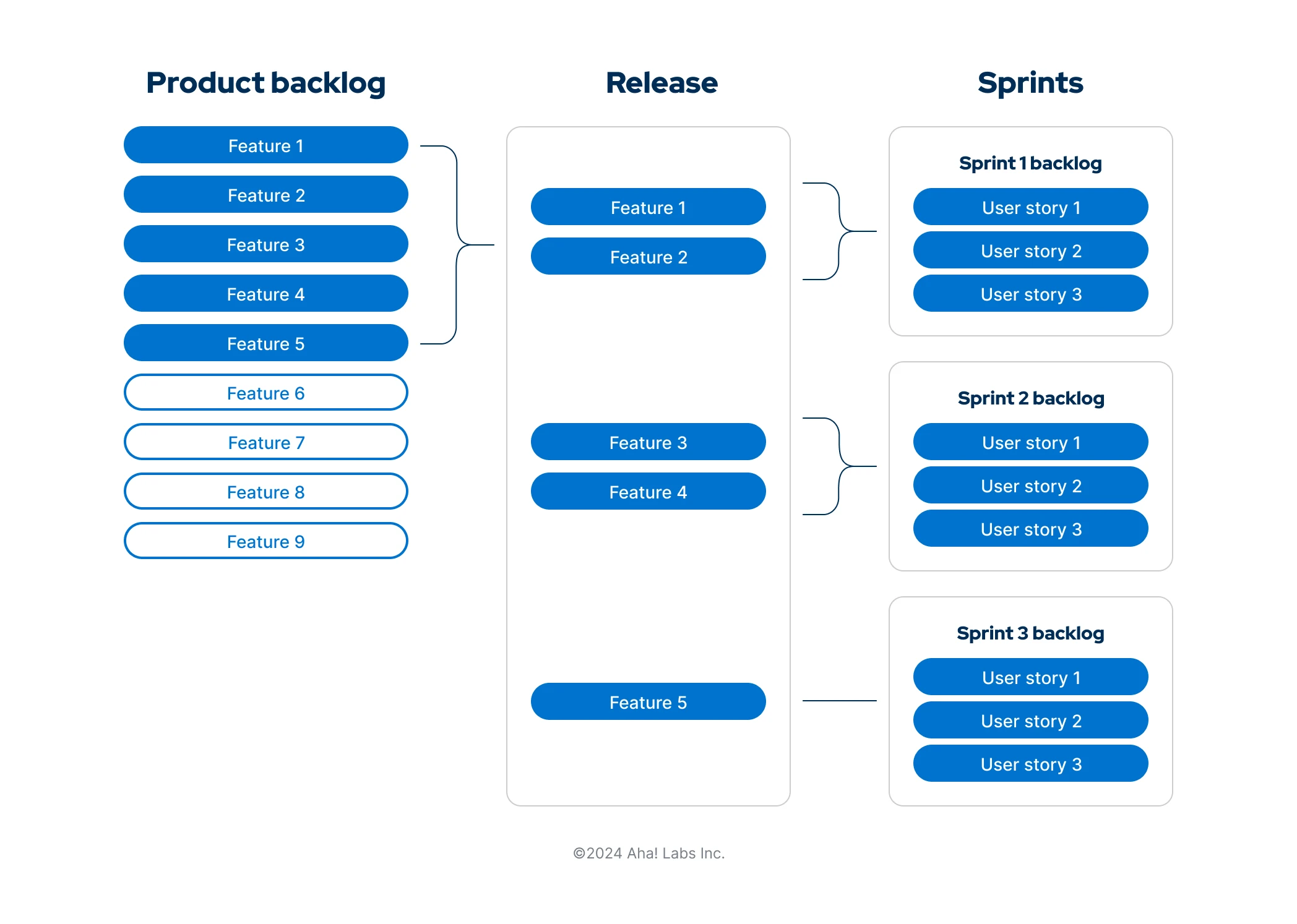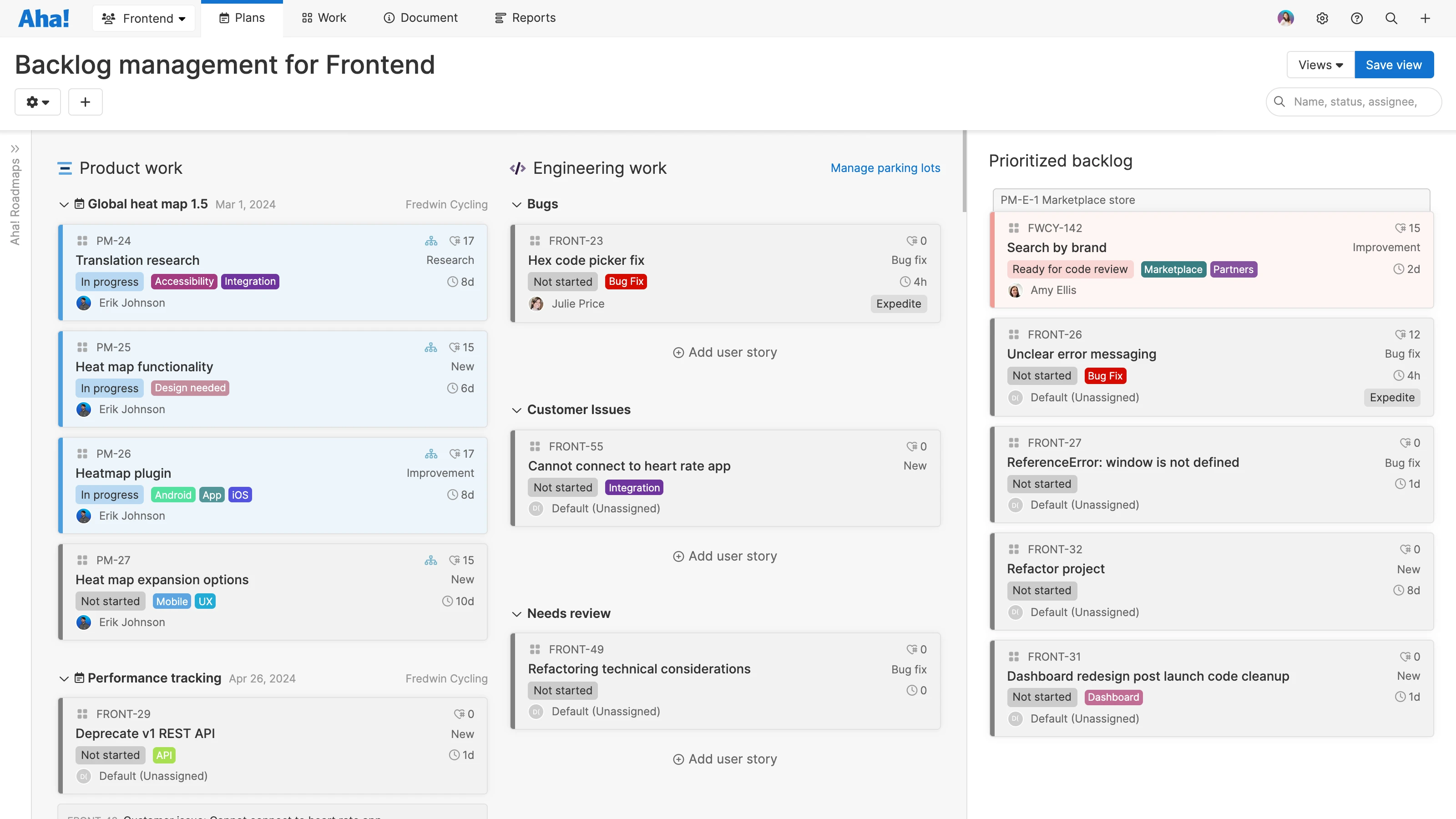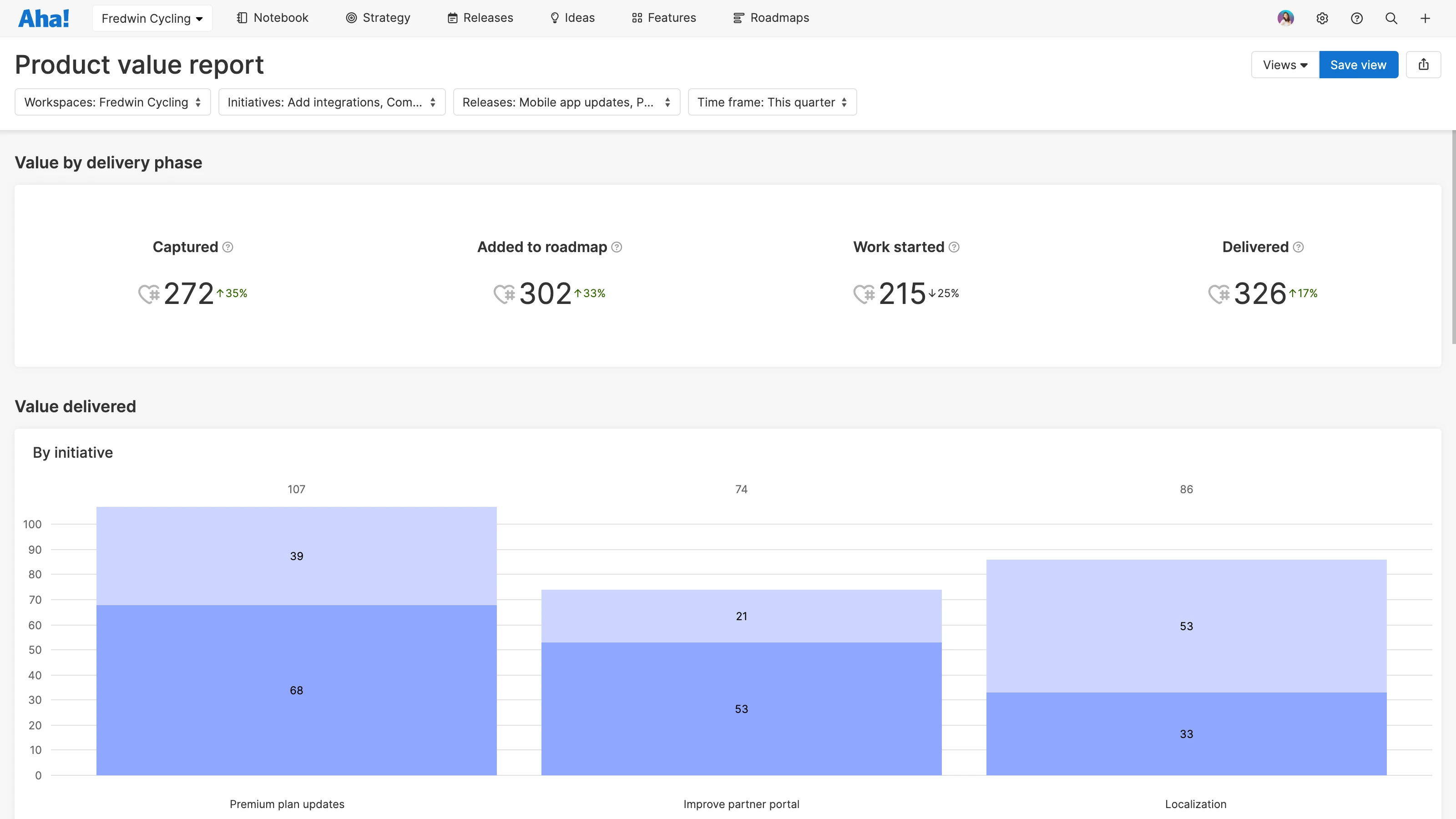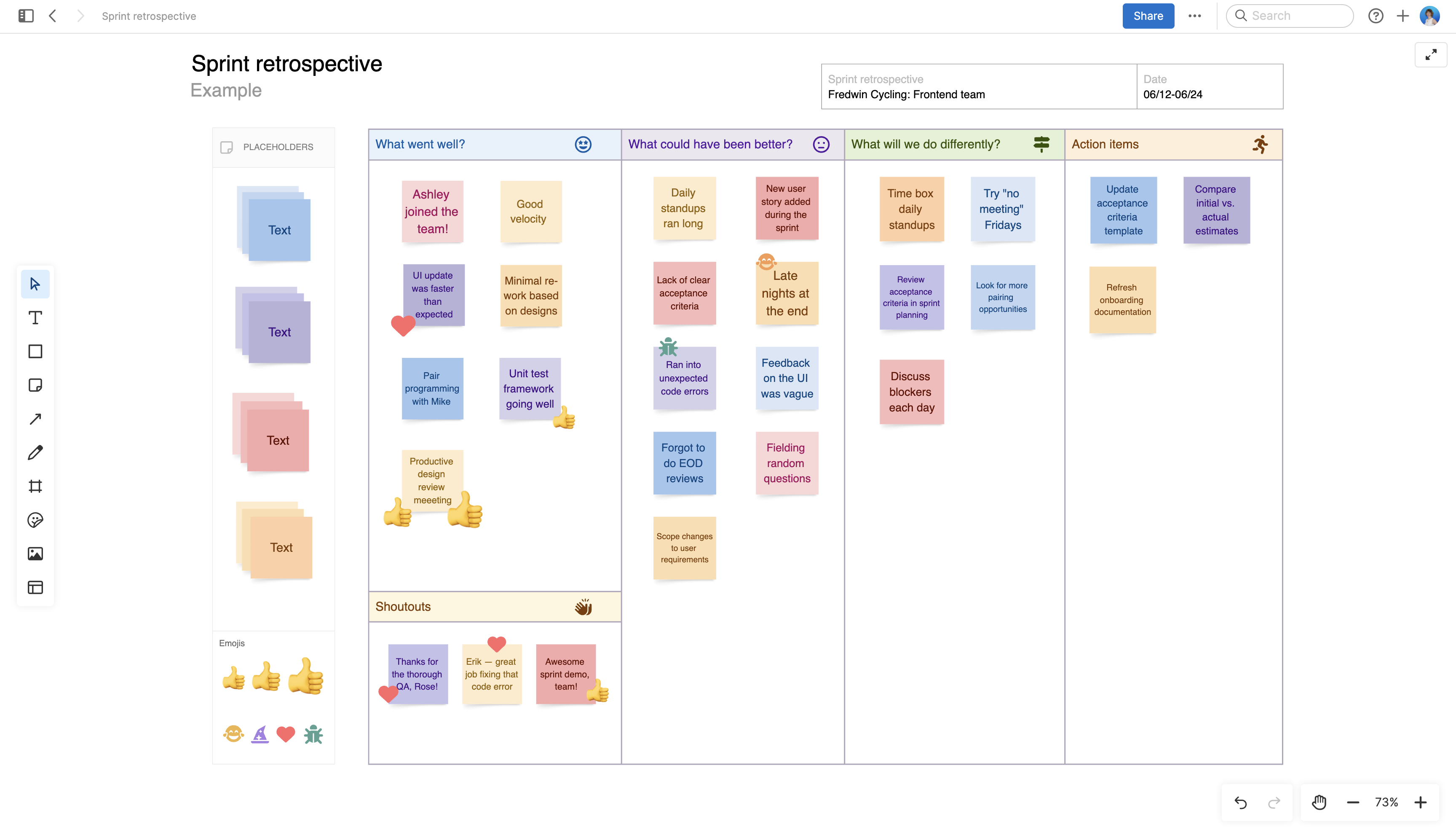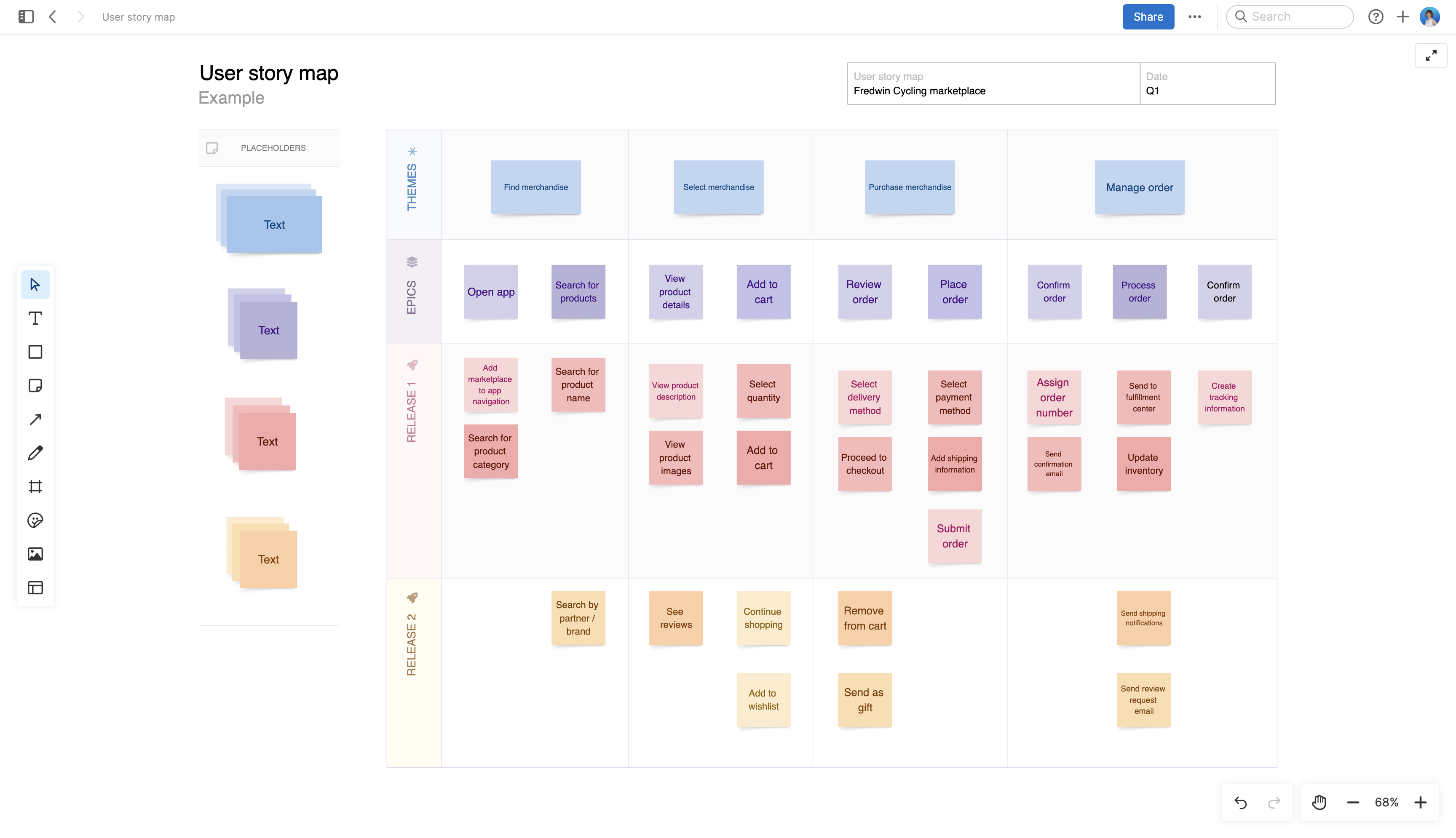Agile best practices for product and engineering teams
Last updated: February 2025
Since the original Agile Manifesto was published in 2001, agile software development has grown to become the de facto work style for most technology companies. Behind the agile label, there are many frameworks and examples of agile team development practices — sprint planning, daily standups, and backlog refinement to name a few. And even if your organization does not follow one specific agile framework, you likely incorporate some of these practices into your approach to building software.
No matter how "agile" you really are, product management and engineering are sure to be at the center of your efforts. These teams work closely together to define, prioritize, and build new value for customers — coming together on key agile practices such as sprint planning and agile retrospectives. This cross-functional collaboration is essential to driving the iterative development and continuous improvement agile calls for.
Align engineering with product — try Aha! software.
But this level of teamwork is not a given. It is never easy to establish (or sustain) a harmonious partnership between product and engineering. Conflicting opinions, communication gaps, and out-of-sync workflows often get in the way. If this sounds familiar, or if you are revving up for an agile transformation and want to set yourself up for success, the agile best practices in this guide can help you bring product and engineering together effectively.
Read on or jump ahead here:
What are the benefits of following an agile approach?
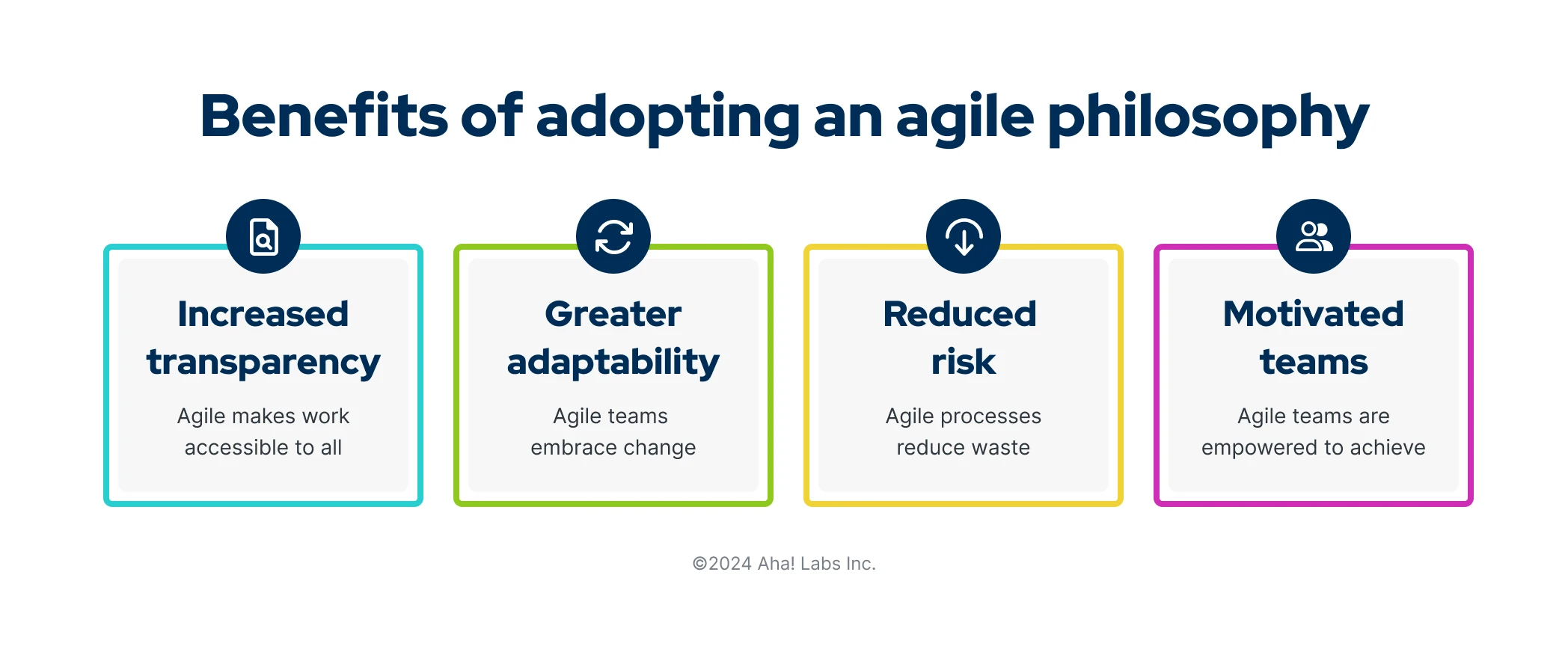
Spotify. Amazon. Microsoft. Many of the world's leading technology companies embrace agile ways of working. This is no coincidence — the main benefit of agile is greater competitive advantage. The premise is that you can become more productive, deliver more value, and better satisfy customers by empowering teams to work incrementally. Customers are included in the product development lifecycle, too, as continuous delivery means quicker integration of user feedback and ideas. For example, a suggested improvement might make it into the next sprint and be shipped within days or weeks.
In addition, other benefits that come with following an agile approach include:
Increased visibility: Work is made visual. Literally. Whether your team practices kanban or follows scrum methodology, most agile frameworks involve visualizing work at all stages of development. This kind of transparency increases accountability across the organization, making it possible to spot roadblocks and pivot as needed.
Adaptability to change: Change is a constant, and a welcome one. Because agile teams complete work in small chunks, they are better able to respond to evolving requirements, shifting business landscapes, or emergent competitors.
Reduced financial risk: Agile encourages delivering value as quickly as possible and then improving iteratively based upon feedback. The priority is to build what will be lovable to customers — not to invest in solving for every use case, as you might do in traditional project management.
More motivated employees: Motivation is critical to productivity. Agile prioritizes self-organizing teams where people collaborate, learn, and build together. This way of working engages teammates and might even reduce attrition over time.
Any successful agile approach hinges on a well-implemented strategy. When product plans sync with business goals, an agile workflow can enable organizations to achieve their best and delight customers in the process. This is a major reason why effective collaboration between agile product management and engineering teams is important: Faster delivery and strategic alignment hinges on their ability to work well together.
Related:



